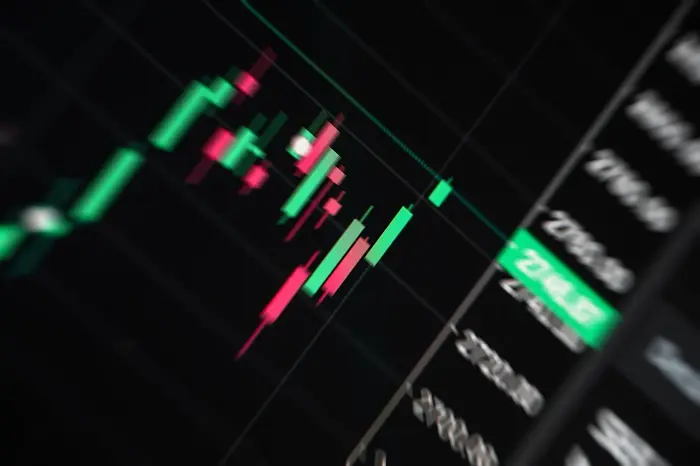Foreign exchange (Forex or FX) trading is one of the most dynamic and convenient financial markets in the world. Unlike traditional stock trading, the Forex market is decentralized and operates 24 hours a day, five days a week. Forex trading offers great profit opportunities, but it also comes with great risks. This article will introduce the basics of Forex trading, including its basic concepts, trading strategies, risk management, and tips for beginners.
What is Forex trading?
Forex trading involves the buying and selling of currencies. Unlike stock trading, where investors buy company shares, Forex trading involves exchanging one currency for another. Currencies are traded in currency pairs, such as the Euro/US Dollar (EUR/USD), the British Pound/Japanese Yen (GBP/JPY), or the US Dollar/Japanese Yen (USD/JPY). The price of currency pairs fluctuates based on factors such as interest rates, economic performance, and geopolitical events.
How the Forex Market Works
The Forex market is a global, decentralized market for trading currencies. It operates 24 hours a day, as the market spans different time zones from Sydney to New York. Forex traders use a variety of platforms to enter the market and execute trades. The main purpose of forex trading is to profit from currency price fluctuations.
Currencies are traded in pairs, and the value of one currency relative to another is called the exchange rate. The forex market operates through a network of banks, brokers, and retail traders. Banks typically facilitate transactions between central banks and large institutional traders, while retail traders access the market through brokers.
Key Concepts in Forex Trading
Before you start trading Forex, it is important to understand some key concepts that form the basis of the market.
Currency Pairs
Currencies are always traded in pairs. When you buy a currency pair, you are buying the first currency and selling the second. For example, if you buy the EUR/USD currency pair, you are buying the Euro and selling the US Dollar. The first currency in the pair is called the “base currency” and the second currency is called the “quote currency”.
Major Currency Pairs
The most traded currency pairs in the world are called major currency pairs. These pairs include the US dollar (USD) and the currencies of other major economies, such as the Euro, the British Pound, the Japanese Yen, and the Swiss Franc. For example, EUR/USD, GBP/USD, and USD/JPY.
Minor Currency Pairs
Minor currency pairs involve currencies of smaller economies that are traded less frequently. These pairs may have lower liquidity and wider spreads. Examples include the Euro/British Pound (EUR/GBP) and the Euro/Swiss Franc (EUR/CHF).
Leverage
Leverage is an important feature of Forex trading that allows you to control larger positions with less capital. Essentially, leverage amplifies both potential profits and potential losses. For example, if you use 10:1 leverage, you can control a $10,000 position with only $1,000 of your own capital. While leverage can amplify gains, it also increases the risk of large losses.
Spread
The spread is the difference between the bid and ask prices of a currency pair. It is essentially a fee charged by the broker to facilitate a trade. In most cases, brokers offer a “floating spread,” which means that the spread changes depending on market conditions. A lower spread is generally better for traders because it reduces the cost of entering and exiting a trade.
Pip
A shorthand for “percentage point,” a pip is a unit of measurement used to indicate changes in the value of a currency pair. In most currency pairs, 1 pip is equal to 0.0001. For example, if EUR/USD falls from 1.1000 to 1.1001, it has risen by 1 pip. Pips are key to calculating profit and loss in forex trading.
Margin
Margin refers to the amount of funds required to open and maintain a leveraged position. In forex trading, brokers usually require a deposit of margin to cover potential losses. Margin requirements vary by broker and currency pair traded.
How to Get Started with Forex Trading
Step 1: Choose a Reliable Forex Broker
The first step in trading forex is selecting a reputable broker. A forex broker acts as an intermediary between you and the market, offering platforms where you can place trades. When choosing a broker, consider the following factors:
Regulation: Ensure the broker is regulated by a recognized financial authority.
Trading Platform: Look for a platform that is user-friendly and offers the features you need.
Account Types: Brokers typically offer different account types with varying levels of leverage and minimum deposit requirements.
Fees and Spreads: Compare spreads and commissions to ensure the broker offers competitive pricing.
Customer Support: Good customer service is essential for resolving any issues or questions you may have.
Step 2: Open a Trading Account
Once you’ve chosen a broker, you will need to open a trading account. Most brokers offer different account types based on your trading preferences. You will typically need to provide identification documents and deposit funds into your account.
Step 3: Learn About Forex Charts
Forex traders use charts to analyze currency price movements and identify trends. There are different types of charts, such as line charts, bar charts, and candlestick charts. The most common chart used by traders is the candlestick chart, which provides more detailed information about price movements over time.
Step 4: Practice with a Demo Account
Before trading with real money, it’s a good idea to practice using a demo account. A demo account allows you to trade with virtual money, enabling you to familiarize yourself with the platform, test strategies, and develop your skills without risking real capital.
Forex Trading Strategies
To succeed in forex trading, it’s important to have a well-defined trading strategy. There are various strategies employed by traders, depending on their trading style, risk tolerance, and time commitment.
1. Scalping
Scalping is a short-term strategy that involves making numerous small trades throughout the day. Scalpers aim to capture small price movements by entering and exiting the market quickly. This strategy requires a keen understanding of market conditions and fast execution.
2. Day Trading
Day trading is similar to scalping but typically involves holding positions for several minutes or hours. Day traders aim to profit from short-term price fluctuations within the trading day. This strategy requires constant monitoring of the market and quick decision-making.
3. Swing Trading
Swing trading involves holding positions for a few days or weeks. Swing traders aim to profit from medium-term price movements and trends. This strategy is ideal for those who cannot dedicate all their time to watching the markets.
4. Position Trading
Position trading is a long-term strategy where traders hold positions for weeks, months, or even years. This strategy is based on fundamental analysis and focuses on the broader economic picture. Position traders aim to profit from significant market moves over time.
Risk Management in Forex Trading
One of the most crucial aspects of forex trading is risk management. While trading forex can be highly profitable, it is also associated with high risk. Effective risk management can help protect your capital and minimize losses.
Use Stop Loss Orders
A stop-loss order is an instruction to automatically close a trade when the market moves against you by a specified amount. It helps limit losses and ensures that you do not lose more than you are willing to risk on a trade.
Position Sizing
Position sizing refers to the amount of capital you allocate to a particular trade. The larger your position, the greater the potential for both profit and loss. By carefully controlling your position size, you can ensure that no single trade will jeopardize your entire account balance.
Risk-to-Reward Ratio
The risk-to-reward ratio is a measure of how much you are willing to risk compared to the potential reward of a trade. A common ratio is 1:3, meaning you are risking $1 to potentially make $3. A good risk-to-reward ratio helps ensure that even if you have losing trades, you can still be profitable over time.
Never Risk More Than You Can Afford to Lose
One of the golden rules of forex trading is to never risk more than you can afford to lose. Trading with money that you cannot afford to lose can lead to emotional decision-making and increased risk of significant losses.
Common Forex Trading Mistakes
1. Over-leverage
Excessive use of leverage can lead to huge losses if the market moves against your position. Always use leverage with caution and only if you are confident in your analysis.
2. Lack of patience
Many new traders lack patience and tend to make impulsive decisions, entering trades without adequate analysis or strategy. Forex trading requires patience, self-discipline, and a long-term perspective.
3. Ignoring risk management
Risk management is often overlooked by new traders, but it is essential to protect your capital. Always set stop-loss orders, manage your position size, and follow a sound risk management strategy.
4. Trading without a plan
Trading without a clear plan can lead to emotional decisions and unnecessary losses. Develop a trading plan that encompasses your goals, risk tolerance, and trading strategy.
Conclusion
Forex trading offers great profit opportunities, but it also comes with high risks. By understanding the basics of the Forex market, developing a solid trading strategy, and implementing effective risk management techniques, you can improve your chances of success. Remember, Forex trading is a skill that takes time to develop, so be patient, keep practicing, and trade smartly.
By following the steps outlined in this guide, you can build a solid foundation to start your Forex trading journey. Stay disciplined, learn from your mistakes, and never stop improving your trading skills.
































